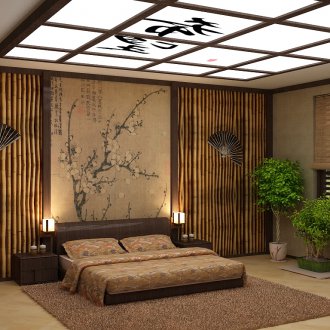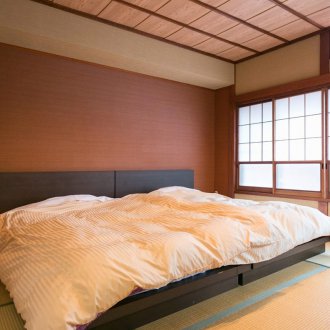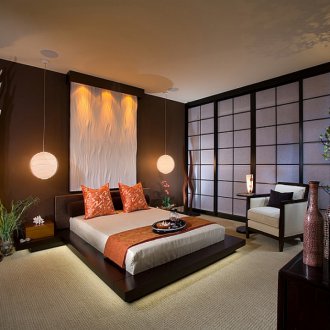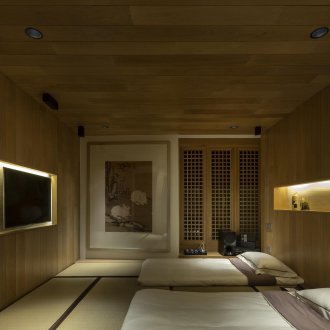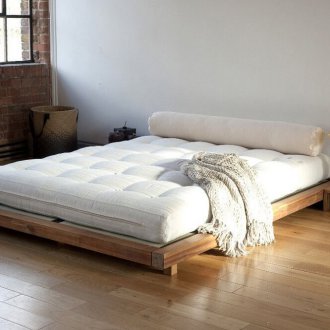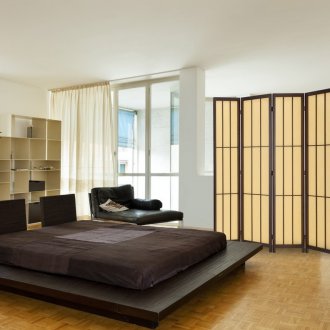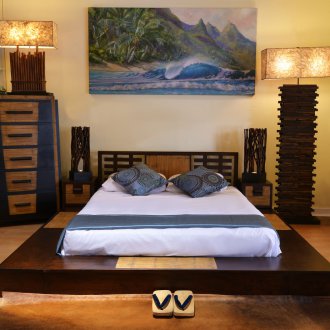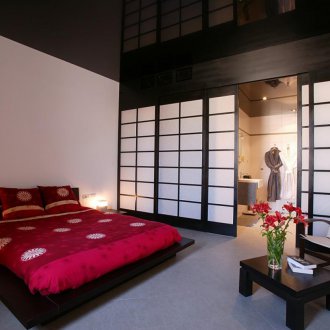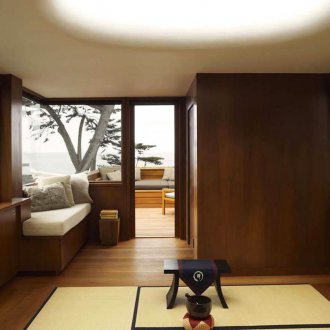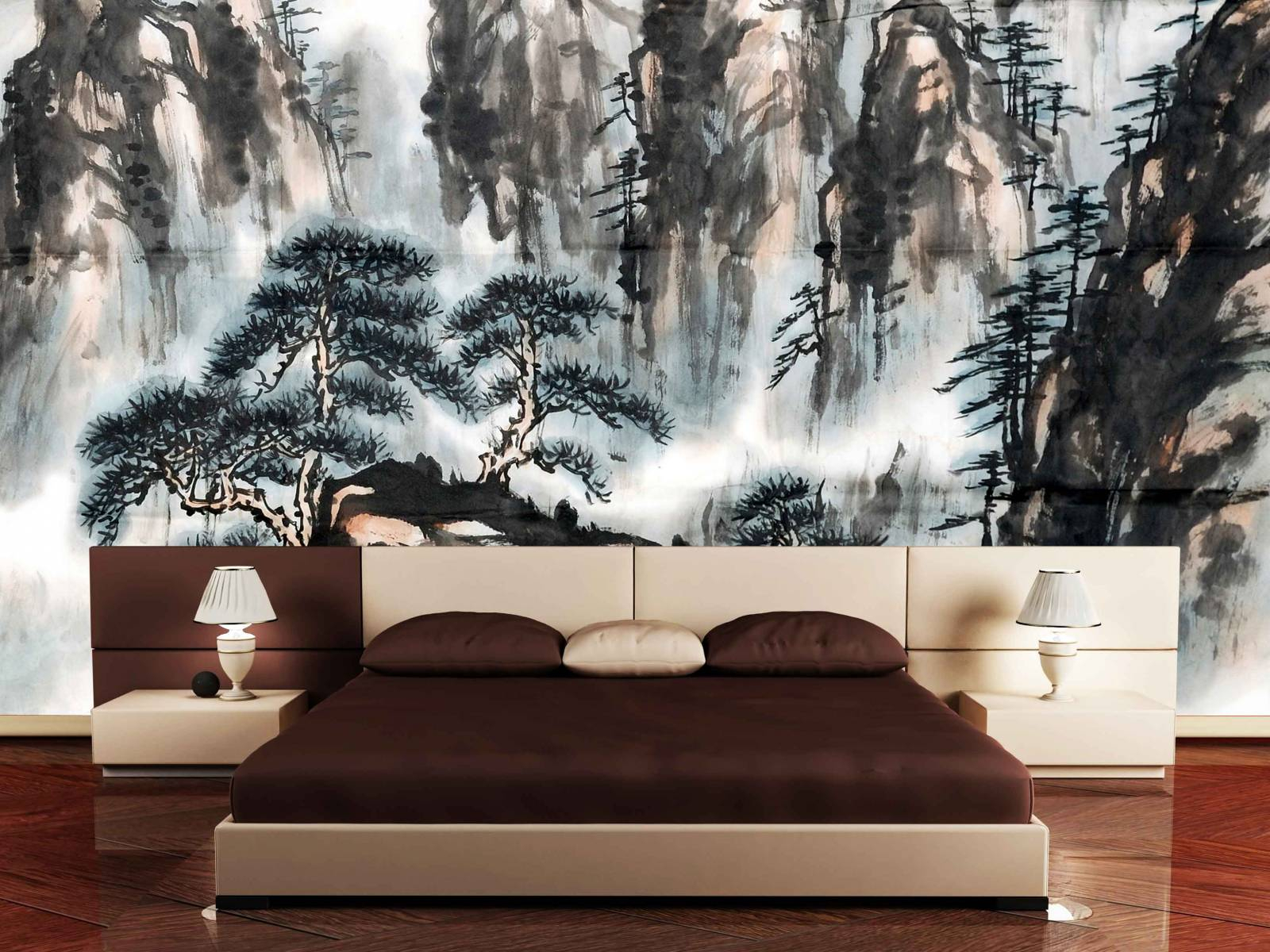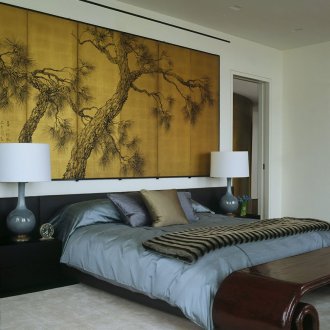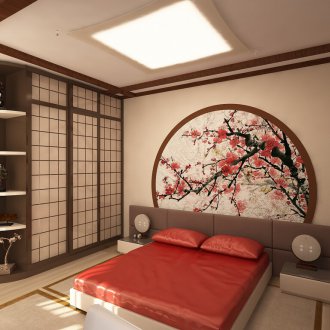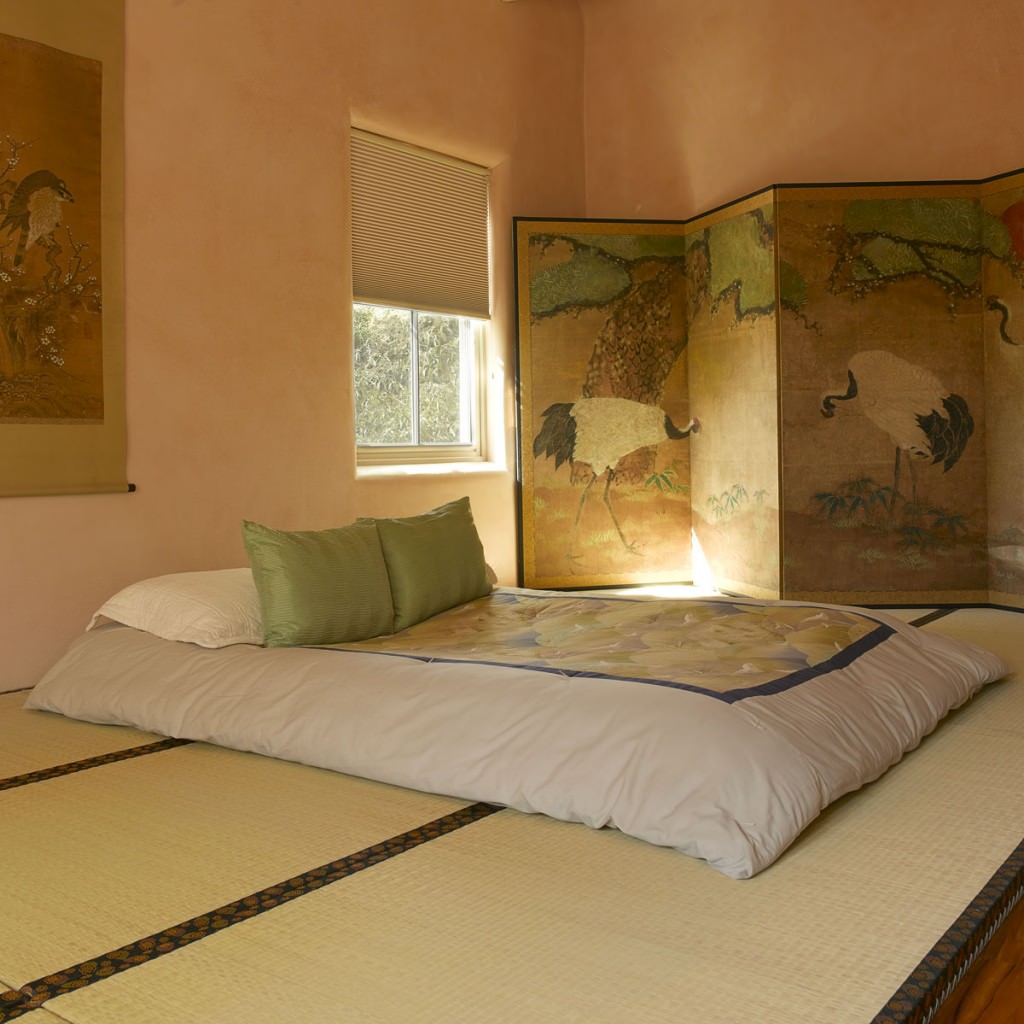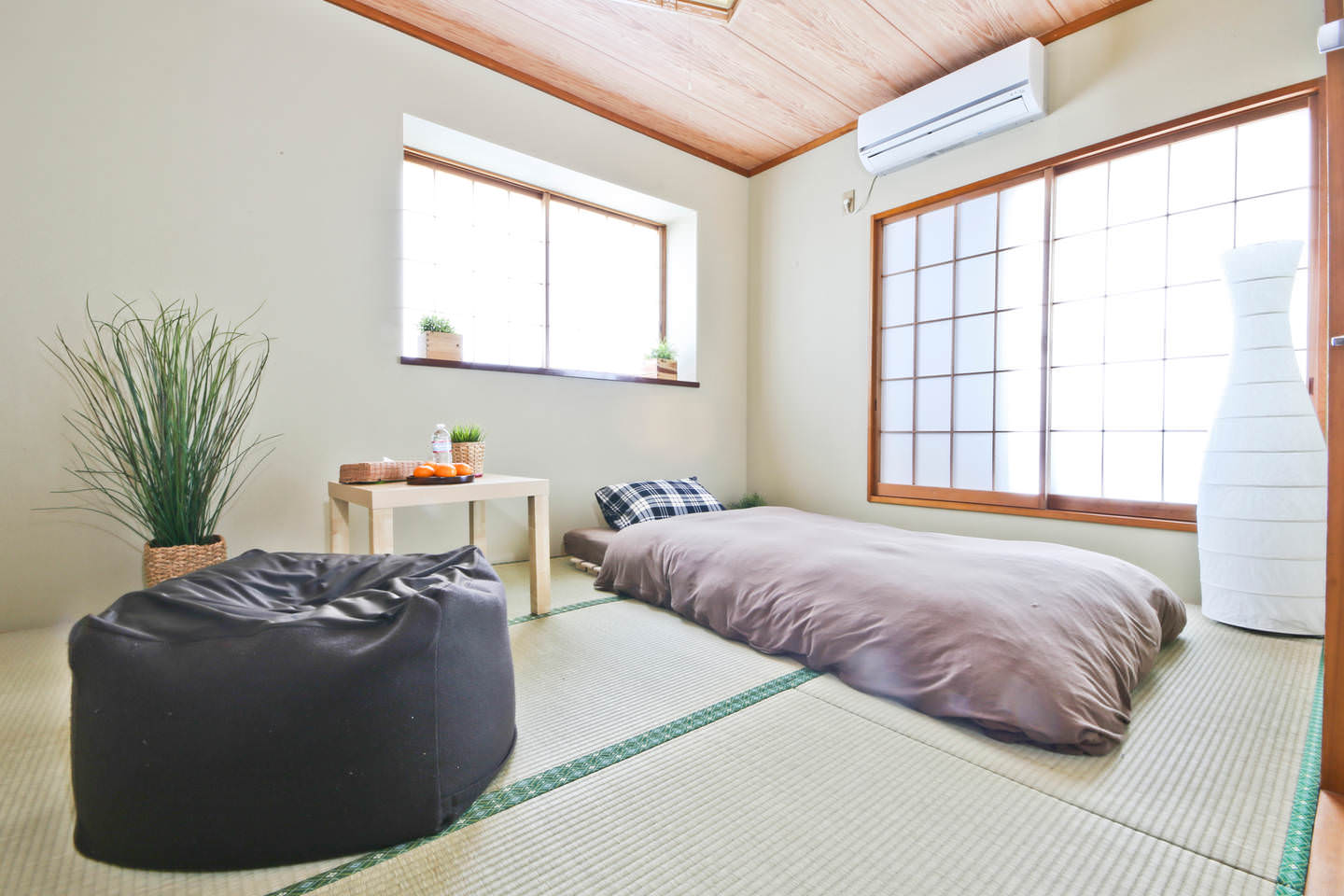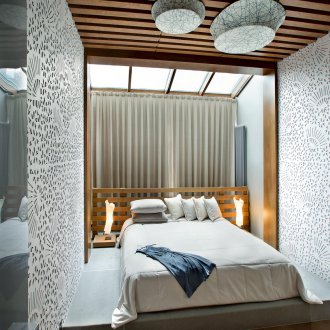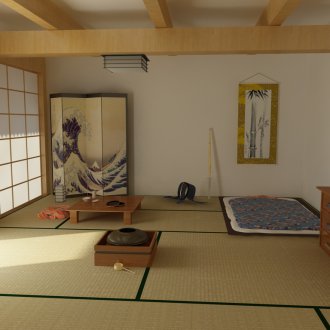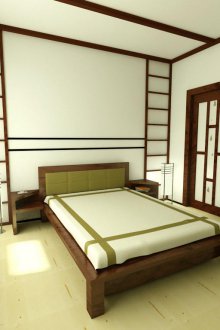Japanese bedroom: at the heart of the whole tradition (21 photos)
Content
It has long been noticed that a person who comes home after an eventful working day is trying to find and make up for what he lacked all day. In our fast-paced life, filled with dozens of big and small things, sometimes we want to stop in this run in a circle and think about who we are and why we live. That is, when you come home, come to your senses. Home furnishings should have to this. Is that why in recent years the desire of many people to furnish their home, and especially the bedroom, in the tradition of minimalism, has been so strong. Indeed, it is with a minimum number of different objects in the room that thoughts calm down and gradually all the worries of the past day recede into the background. If you are constantly visited by such a desire, design a bedroom in the Japanese style with your own hands - the standard of calm, conciseness and poise.
Features of the Japanese style in the interior: remember the story
The nature of any national interior is made up of the characteristics of the life of the indigenous population. Climate, geographical location, relations with neighboring countries have their influence. Japan, being far from busy trade routes, has long remained distinctive. This affected the interior of the Japanese home, which has not changed much over the past few centuries. In the construction and decoration of the house, the Japanese still use materials of natural origin: solid wood, rice paper, reeds and natural fabrics (linen, silk, cotton_.
Life on small mountainous islands taught to save space and build compact dwellings, separate rooms in which are multifunctional and have a symbolic separation. One room can serve as a living room during the day, and at night as a bedroom. This is possible only in the absence of excess furniture and the desire for asceticism in everyday life. Until the 21st century, a bed filled with cotton and wool served as a bed for the Japanese. In the morning it was folded and cleaned.
Frequent heavy rains, hurricanes, tsunamis and earthquakes forced the Japanese to learn how to manage with light buildings that are easier to restore or even rebuild in a new place, taking with them a minimum of things. Careful observation of the changing weather helped to notice the imminent danger in time and often save lives, and at the same time to see the beautiful in every instant of the present, so natural motifs are an integral part of the design of the Japanese house.
Five Japanese-style whales in the interior
A short digression into history helped us see the basic principles of the formation of the Japanese interior:
- a minimum of things and furniture;
- functionality;
- use of natural materials;
- mobile partitions instead of walls;
- natural motifs in a few jewelry.
Understanding these principles will help to create an authentic atmosphere in your bedroom and fill it with the spirit of this ancient distinctive culture. Although in some moments it will be necessary to do with its imitation, since the layout and size of the room in an apartment building can differ significantly from a traditional Japanese house.
The design of the bedroom in Japanese style should begin with the decoration of the room. Let's start from the very top - from the ceilings.
Ceiling for bedroom
The best solution for decorating a Japanese-style ceiling is a matte stretch fabric. A good alternative is a suspended ceiling - ordinary or combined. The guides can be selected in a contrasting color that simulates the overlap of wood, and part of the suspended plates can be replaced with frosted glass, giving diffused soft light. Let the rest of the plates be white or resemble a light tree in color.
Walls
In Japanese tradition, the walls are often wooden frames tied with rice paper.
In our conditions, to maintain the color, enough suitable style of wallpaper. The maximum imitation can be obtained by covering the walls with a suitable cloth and upholstering with wooden battens.
Floor
The best material for the floor is natural wood. An inexpensive substitute for it can be a laminate. The floor should not differ much in color from the walls. National mats - tatami are always located on the floor. Real tatami are made from rice straw, but for the bedroom, any materials suitable for the style are quite suitable. It is advisable to choose natural ones, an imitation of a wicker rug will look good.
Color and light in the Japanese interior
To design a bedroom in the Japanese style, all shades of wood, white, beige, gray, gray-green are chosen. Saturated pink, reminiscent of blooming sakura is popular. It should literally only be indicated in the interior. The most radical colors are black and red. They are used as contrasting.
In the Japanese interior there is no bright directional lighting, so it is better to use diffused light sources. For the bedroom, you can choose ceiling lamps with frosted glass and bedside with a shade of rice paper and bamboo. Ordinary chandeliers will be inappropriate here.
Bedroom furniture
Japanese furniture is characterized by simple lines, squat and lack of decorative details on the surface. Upholstery of its soft part should be durable and natural. Suitable leather, suede, thick cotton or linen. The furniture in the bedroom should be as small as possible. This is a tradition of minimalism. In order not to suffer functionality and convenience, the choice of furniture should be carefully considered. Ideally, in the Japanese bedroom there is only a mattress, but what was good for the Japanese in the 19th century will not always suit the European. We are used to sleeping on a stationary bed and folding things somewhere.
Before choosing furniture, you need to calculate how many things you will have to put away in storage and decide whether you need a full-fledged closet or can do with drawers built into the bed. If there are not many things, it is better to choose a podium bed. Almost all of these models are equipped with drawers for storing bedding. If you can not do without a separate cabinet, a closet or built-in will do. If you wish, you can put small chests. They are widespread among the inhabitants of the land of the rising sun.
A spacious wooden table for tea ceremonies will successfully fit into the spacious bedroom. Since it is not customary to drink tea in the bedroom, you can put a couple of decorations on the table: a photo in a wooden frame, ikebana in a stylized vase, or a living bonsai tree.
In small Japanese-style bedrooms, a table can be replaced by bedside tables or a pair of shelves above the bed. They will fit the most necessary: a book, a phone, an alarm clock and the same photo in a frame. If you decide to do with shelves instead of bedside tables, then table lamps can be replaced with wall sconces, suitable in style.
Zoning a large Japanese-style bedroom is possible with the help of lighting, as well as using partitions or mobile screens. Sliding partitions can block the bed or use instead of the bedroom door. Mobile screens are suitable for temporary zoning, turning the open space into a secluded place for changing clothes or personal care.These pieces of furniture are wooden frames tied with rice paper. The paper can be replaced with suitable wallpaper or fabric.
Bedroom decoration
There should be very few of them, so as not to turn an imitation of style into a lack of taste. Will be relevant:
- bonsai bonsai;
- ikebana;
- Images of hieroglyphs
- fans;
- floor vases;
- caskets;
- netsuke figures.
If all the walls in the bedroom are solid, one of them can be decorated with photo printing with traditional Japanese themes - bamboo branches, flying cranes, sakura blossoms. The same motifs are usually decorated with screens. Mirrors in such a bedroom should not be present, like any smooth shiny surfaces. Textures resembling natural fabrics and paper are appropriate.
Windows, in our understanding, are absent in the Japanese dwelling; they are replaced by external partitions. Since curtains are still needed to decorate the windows in the bedroom, it is better to stop the choice of rolls of a suitable color. A thick fabric or wicker mat can be used for curtain material. Japanese curtains are also suitable - direct sliding cloth panels.
The bedroom designed in such a way will surely give you a sense of peace and tranquility, sleep will be strong and calm, and awakening will be vigorous and joyful.
